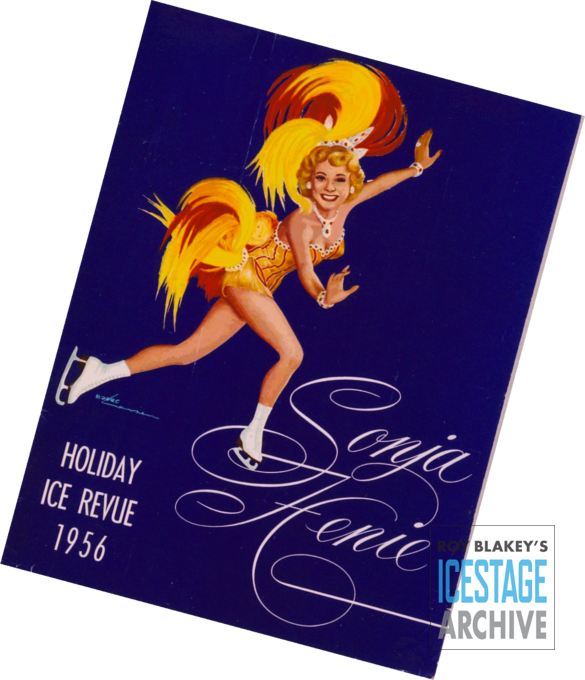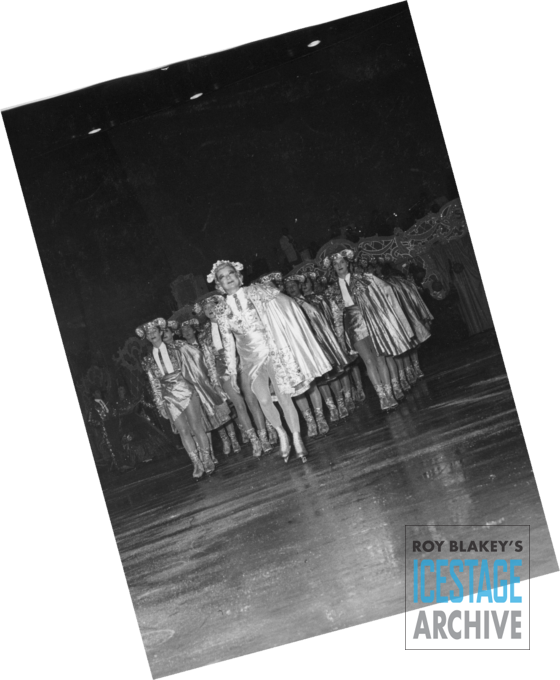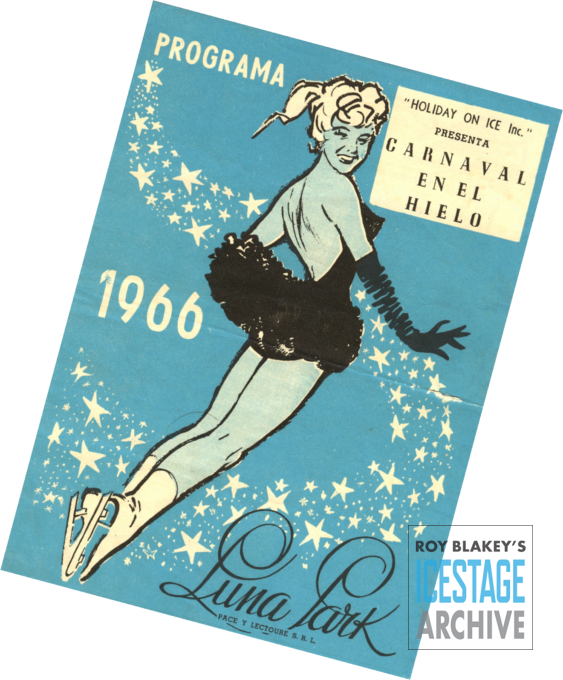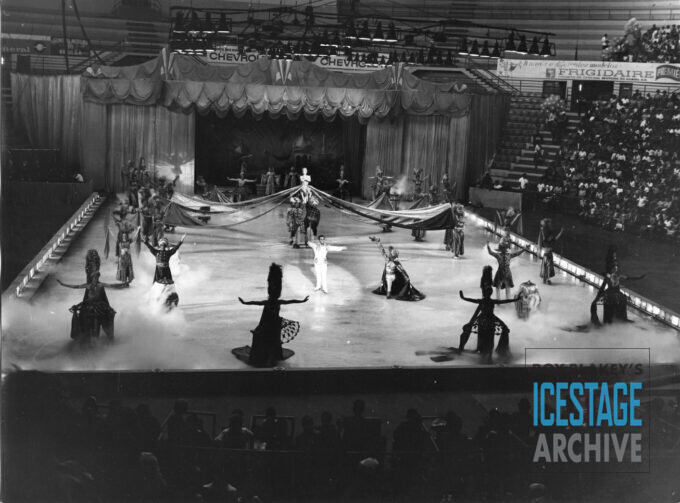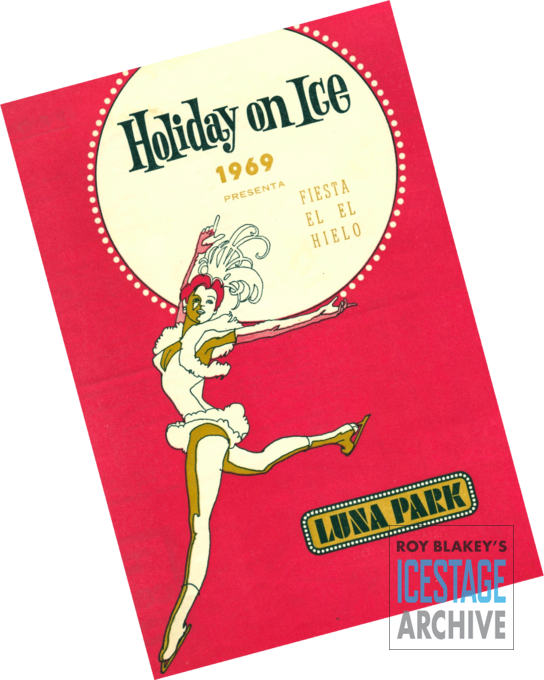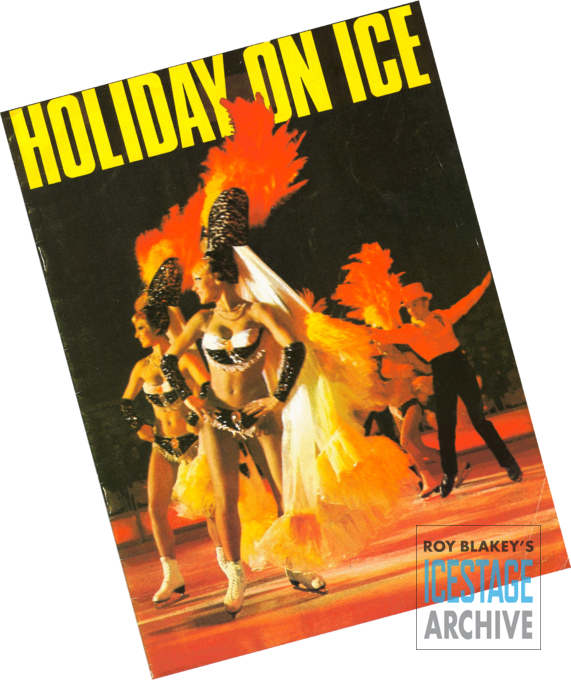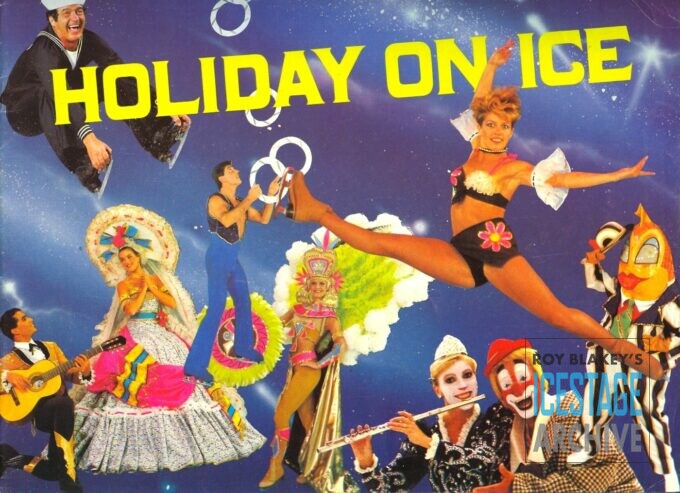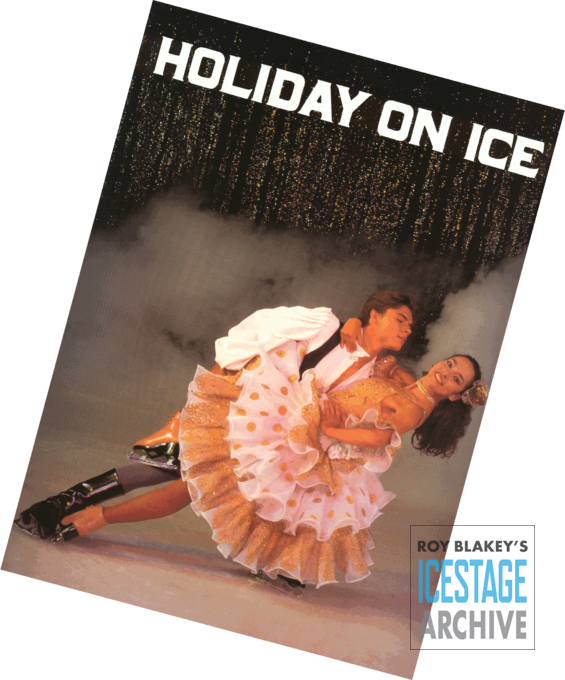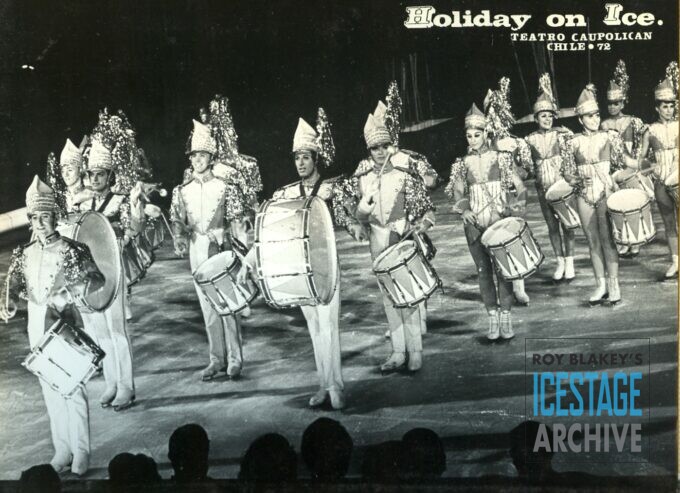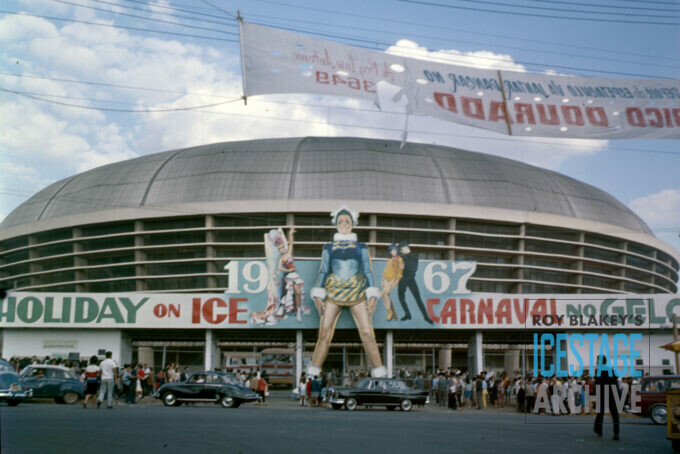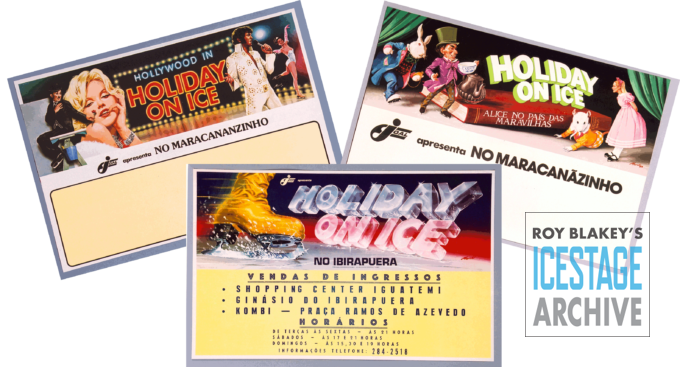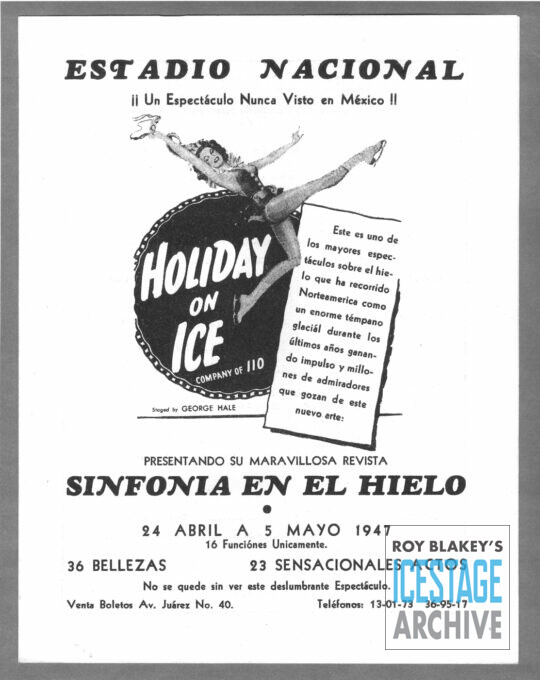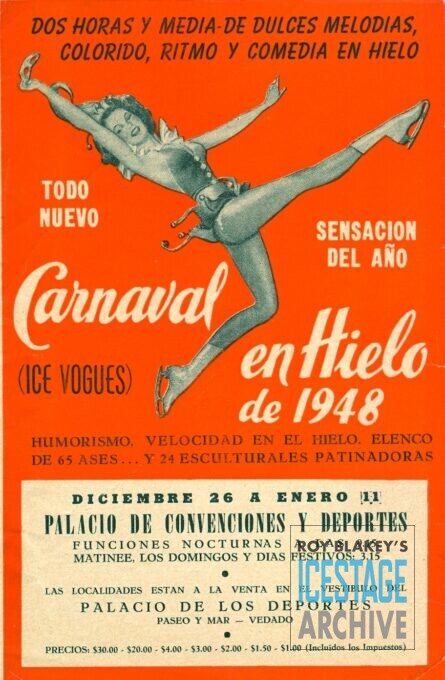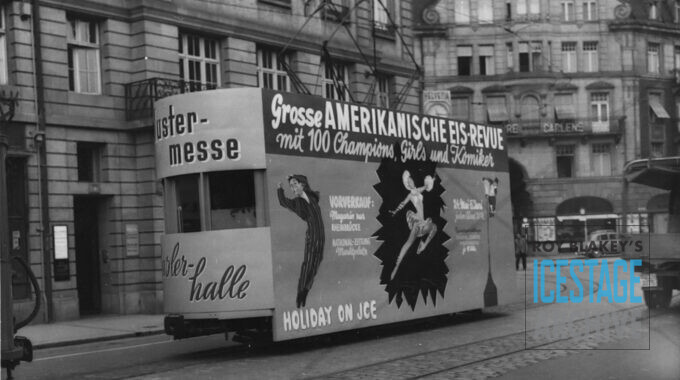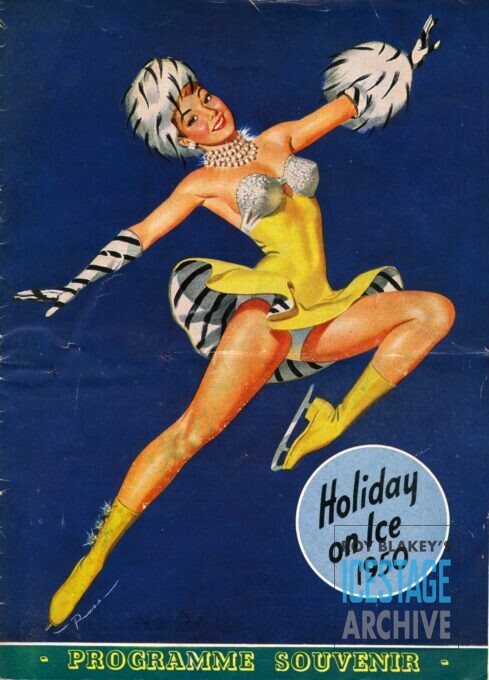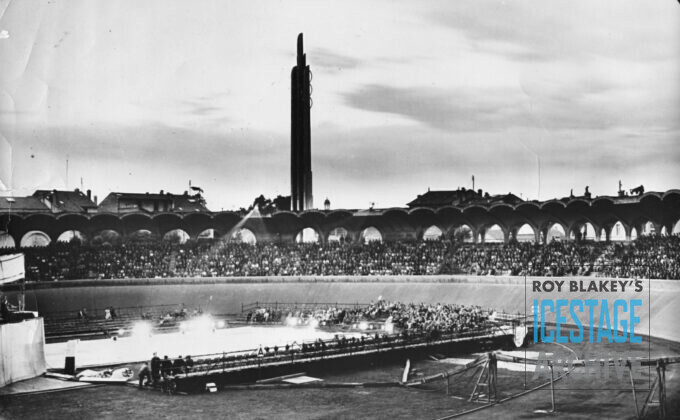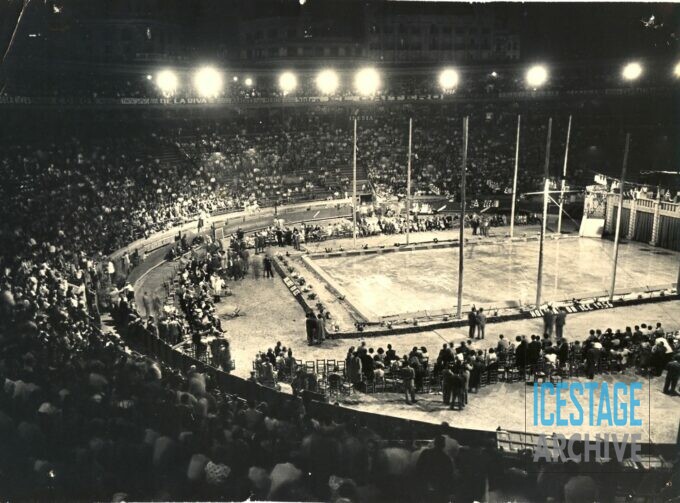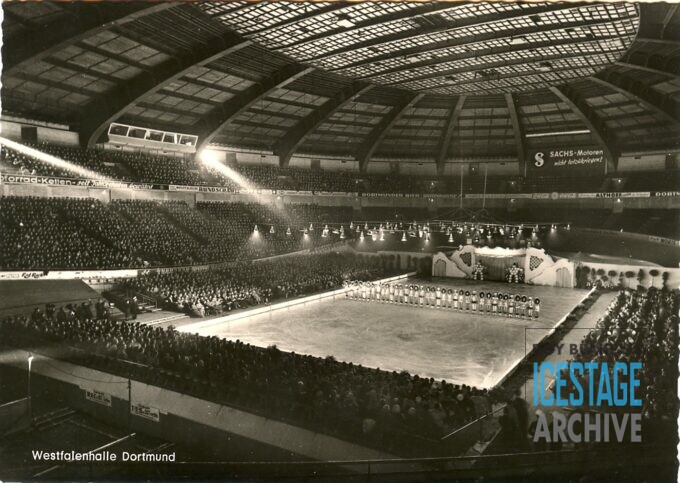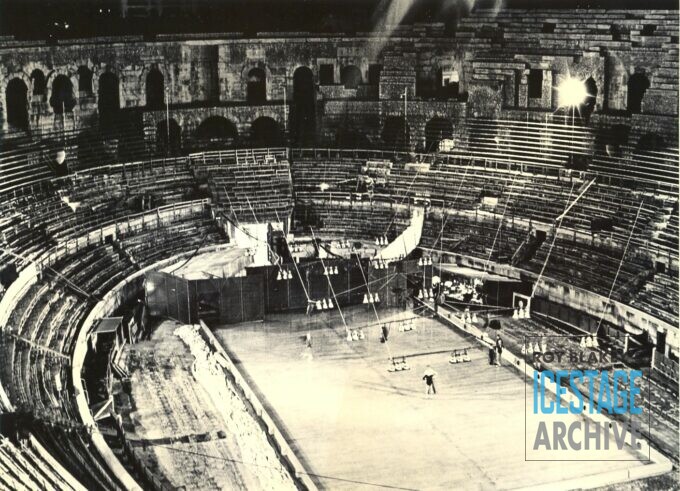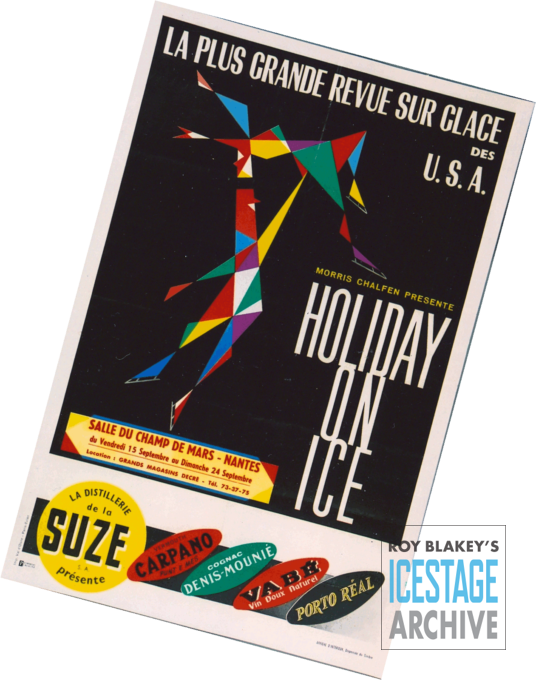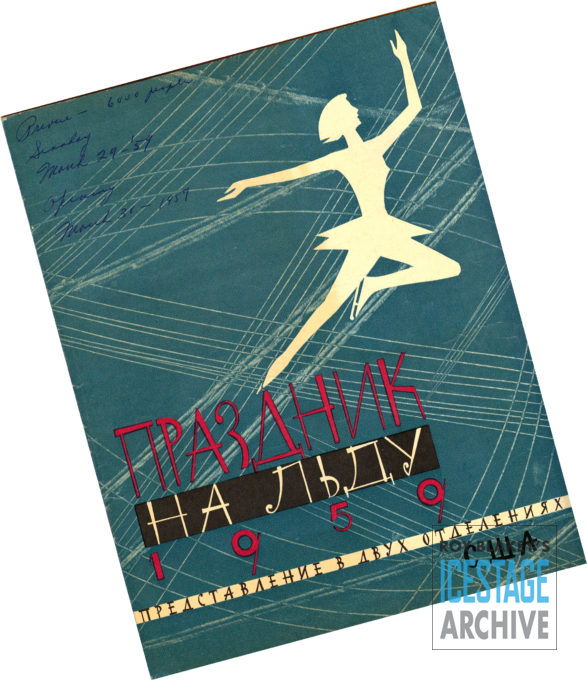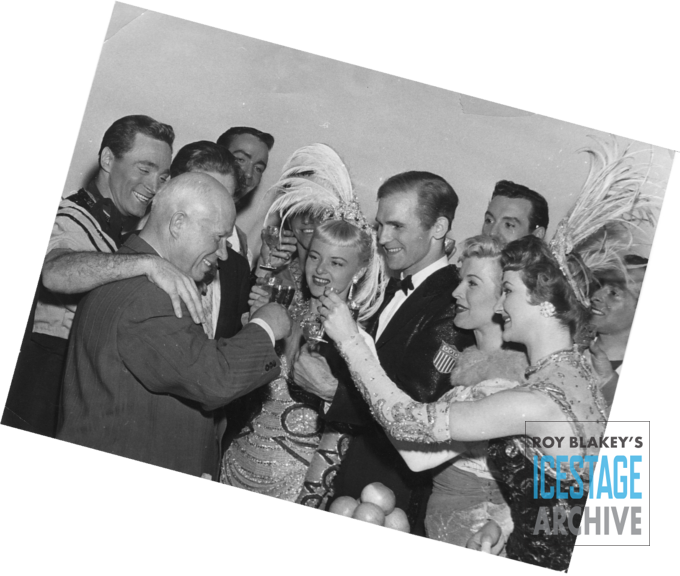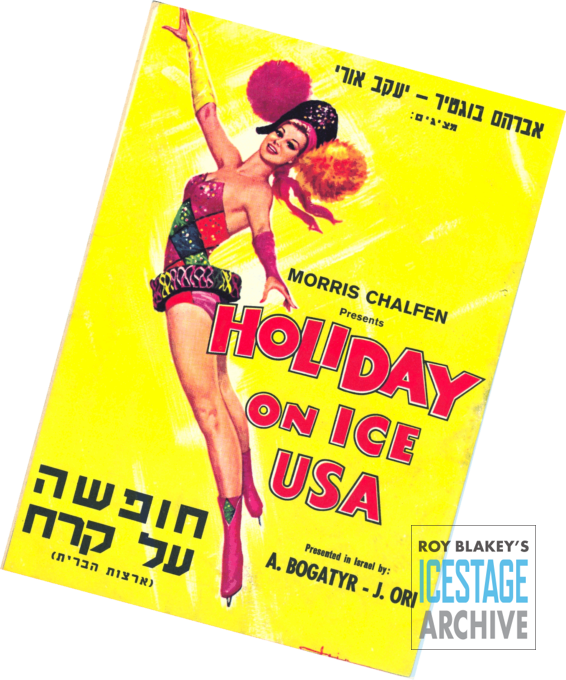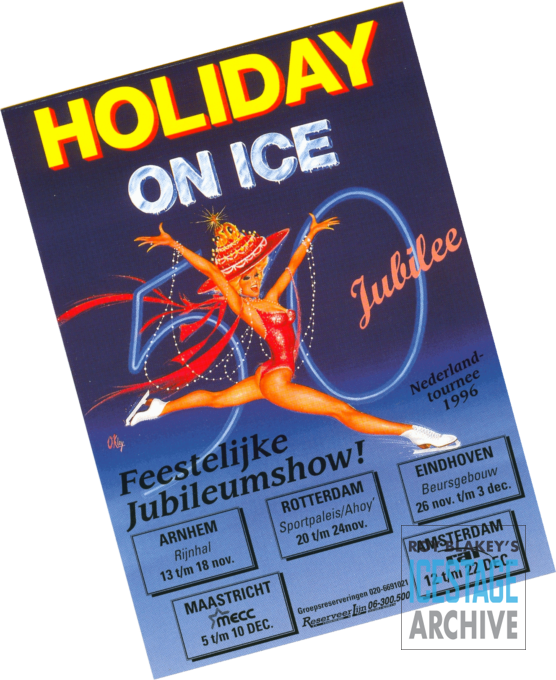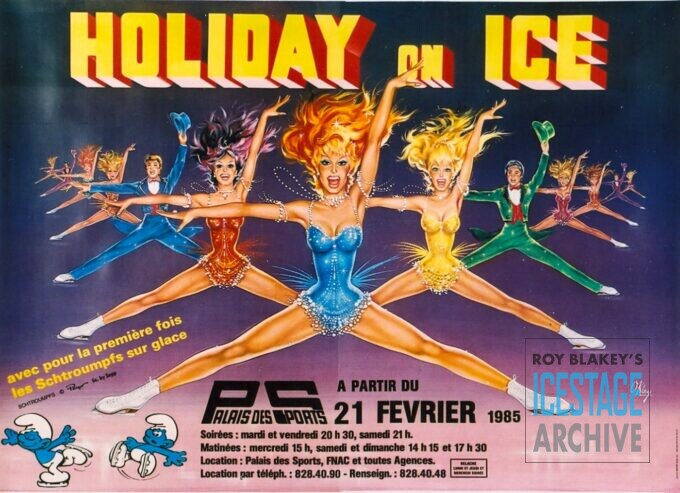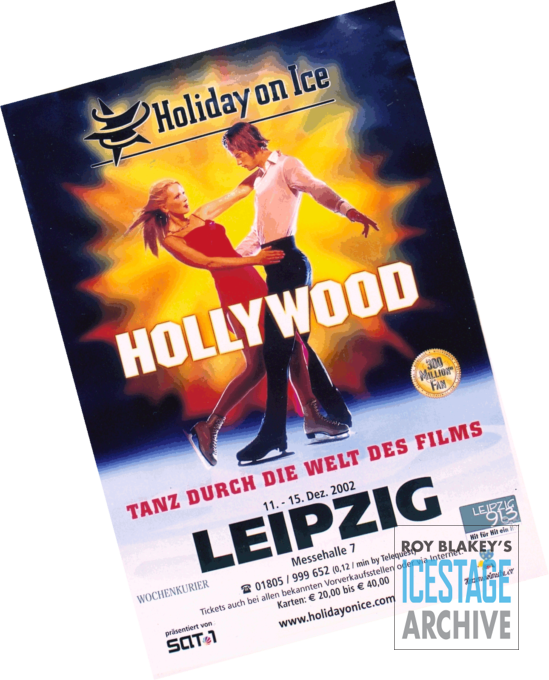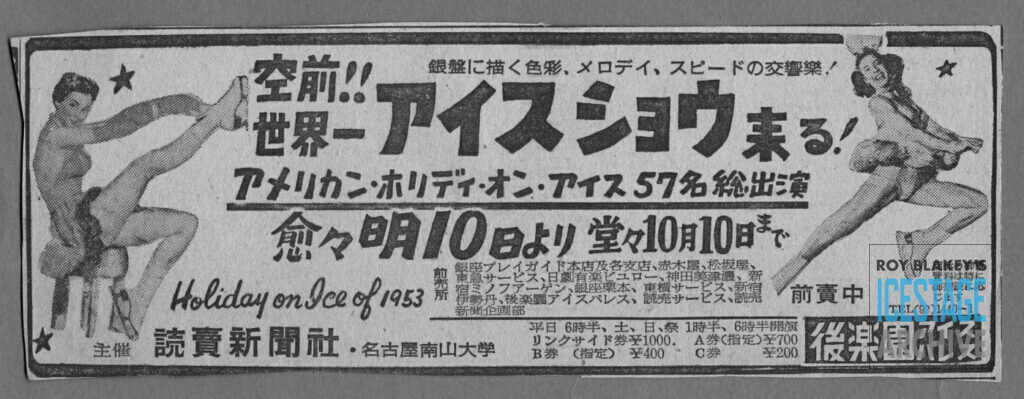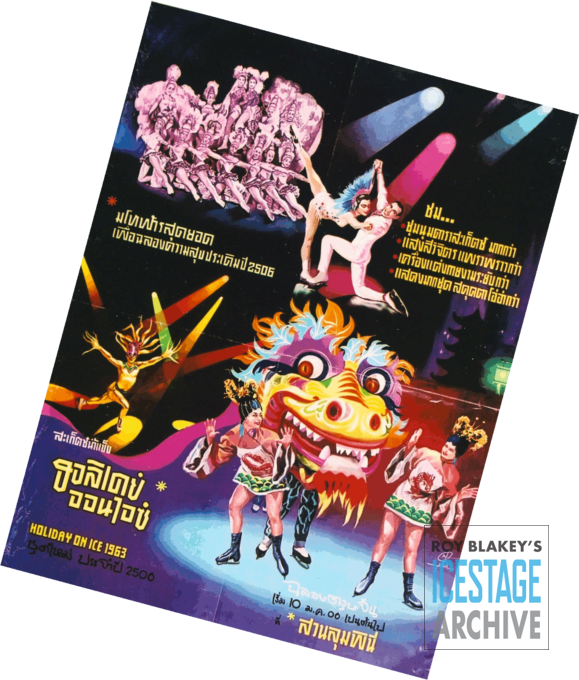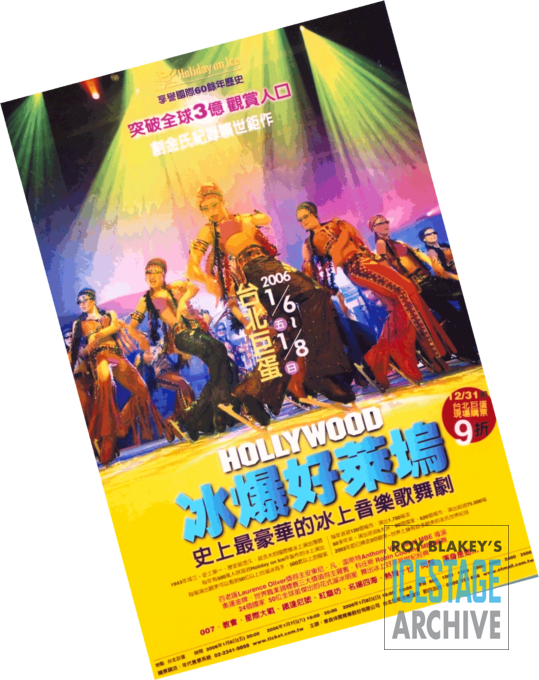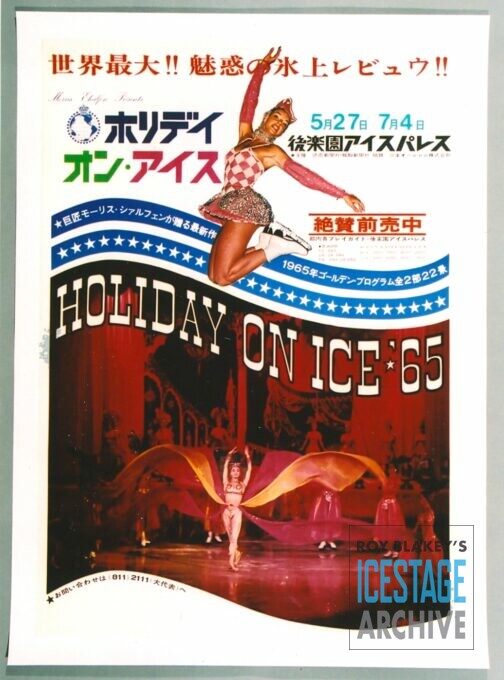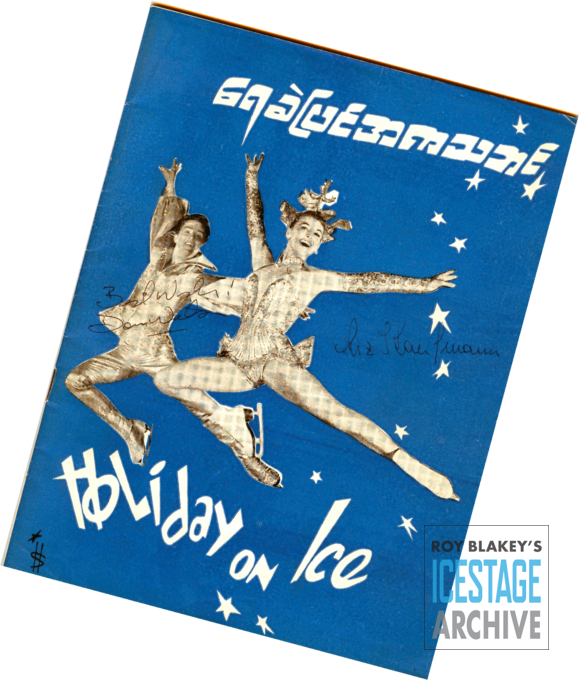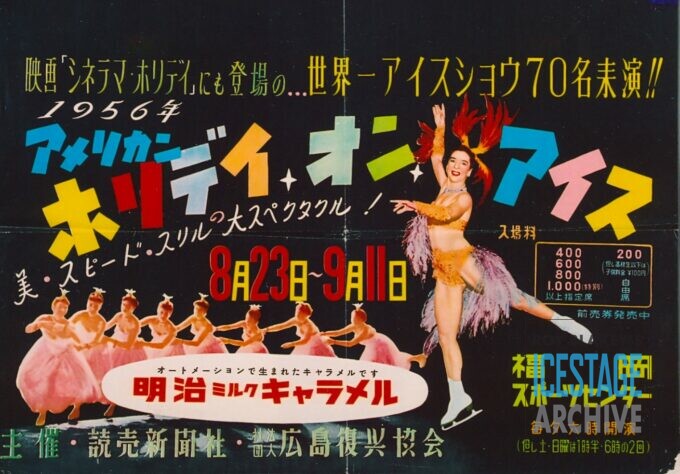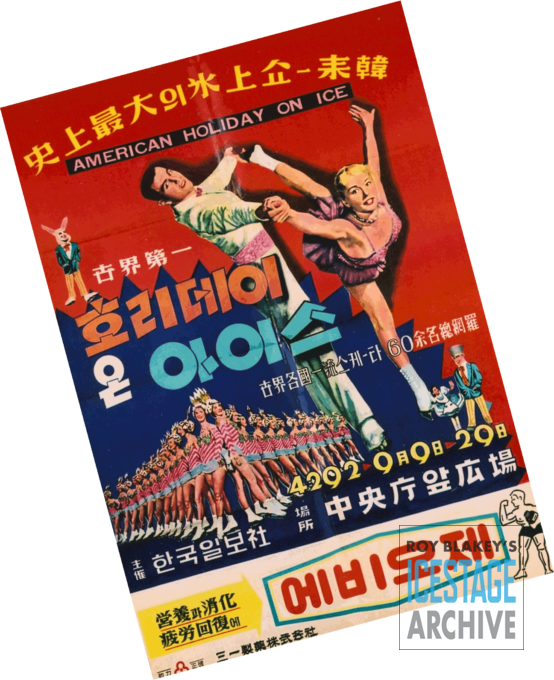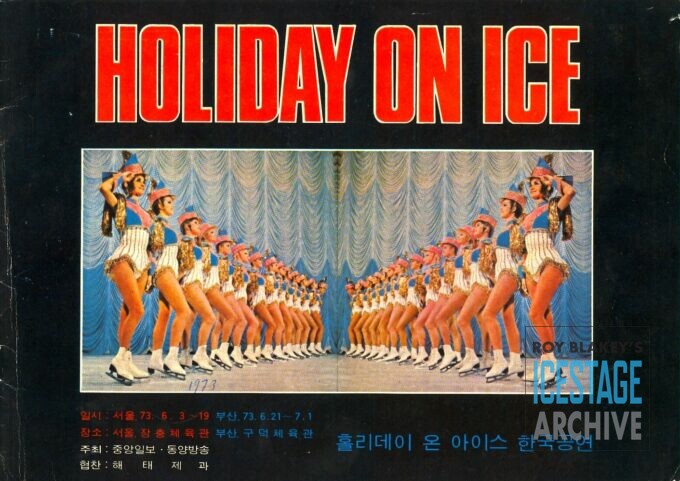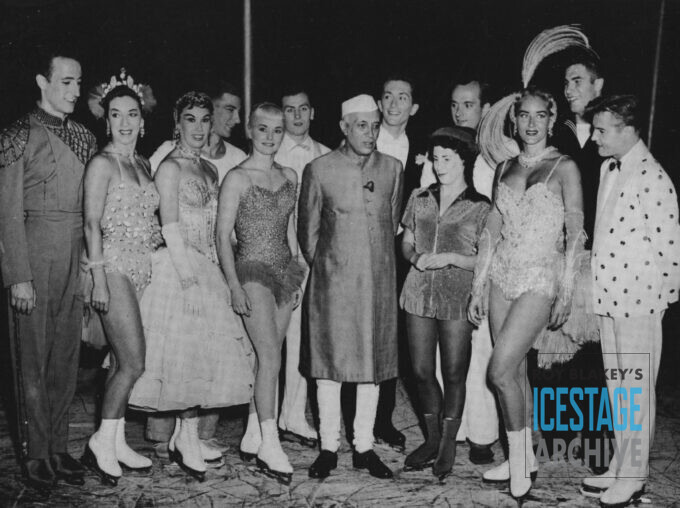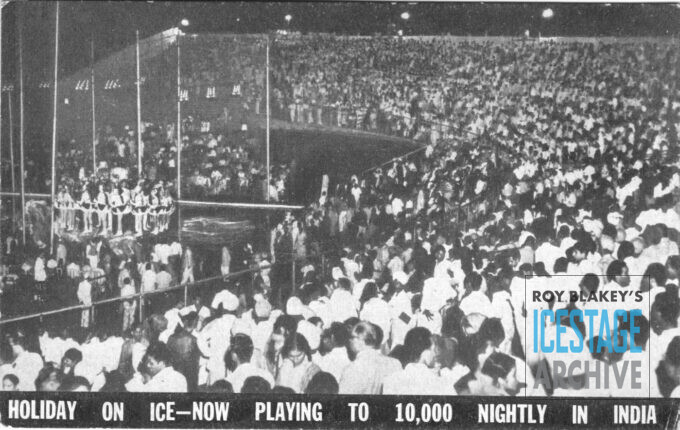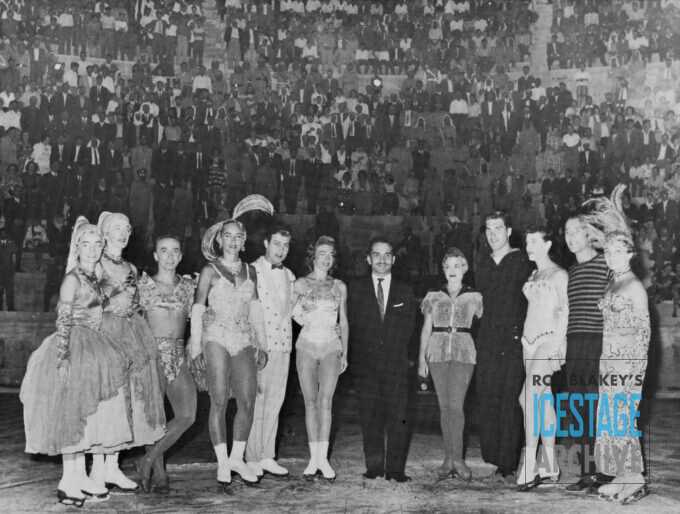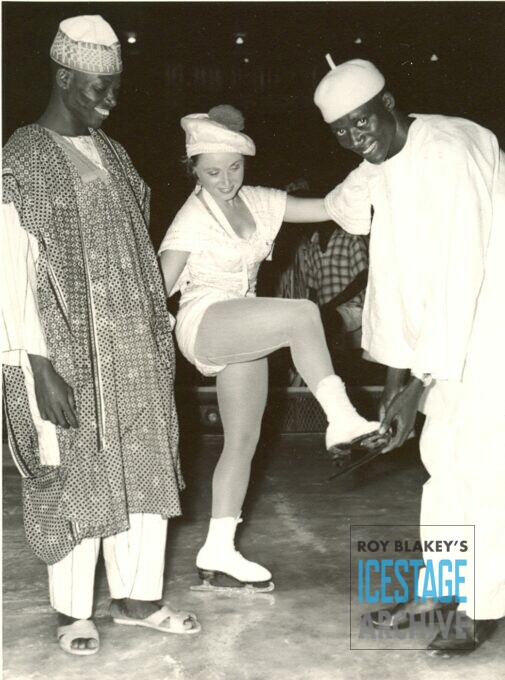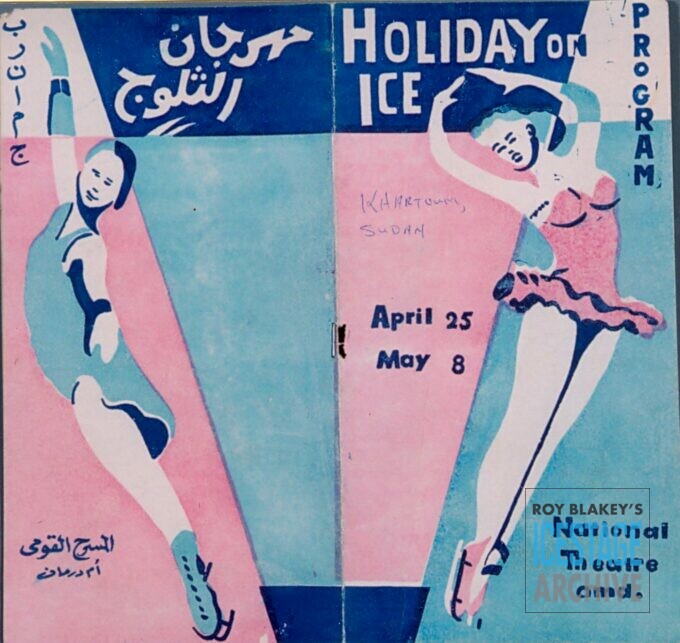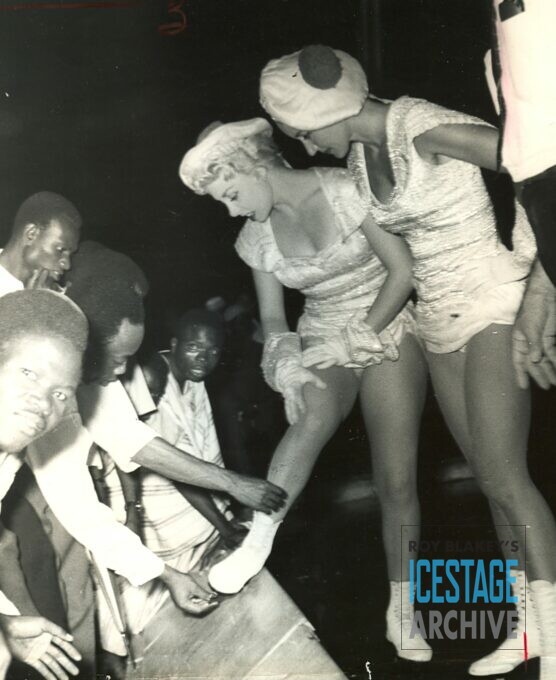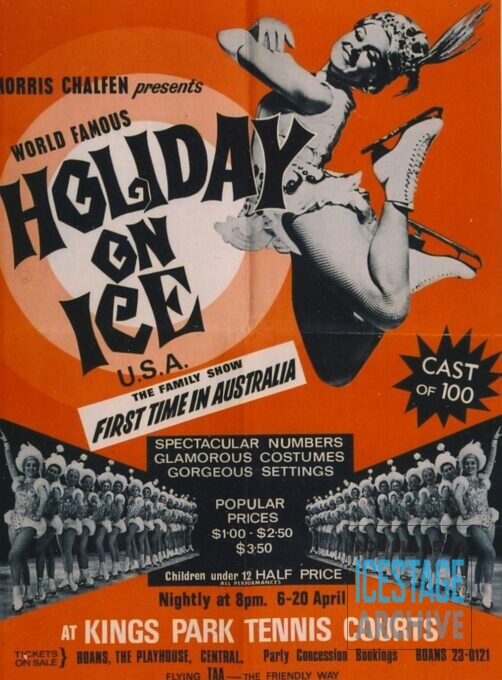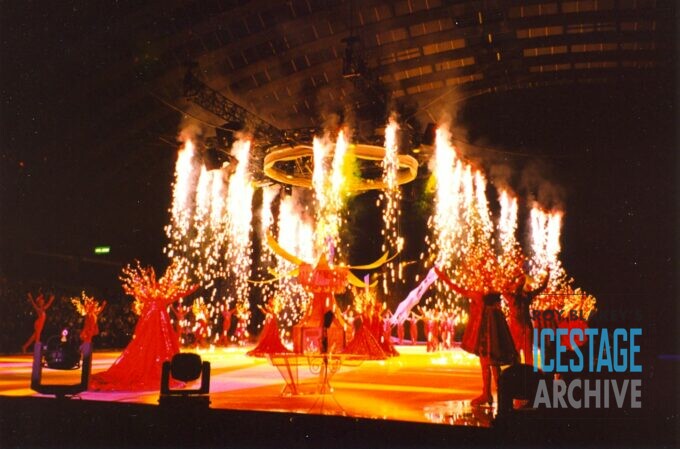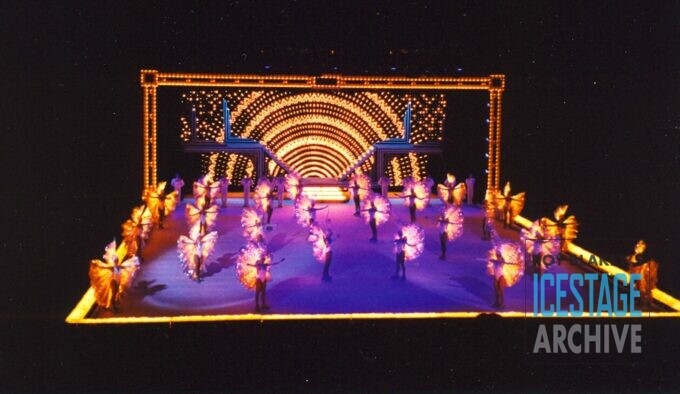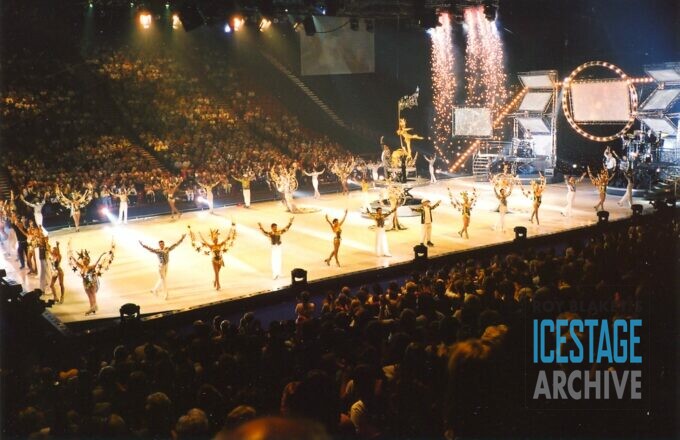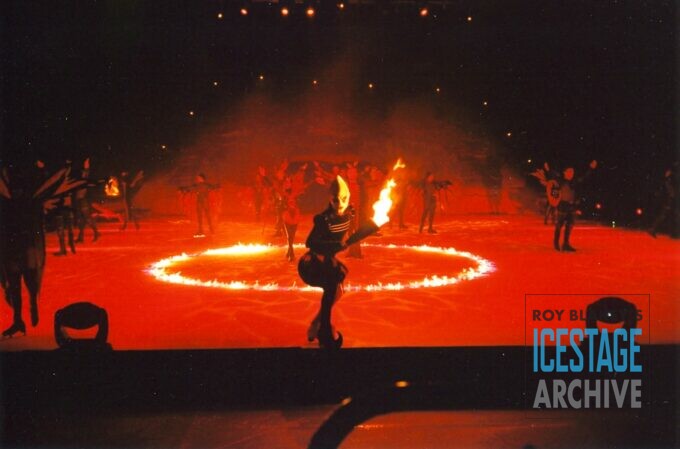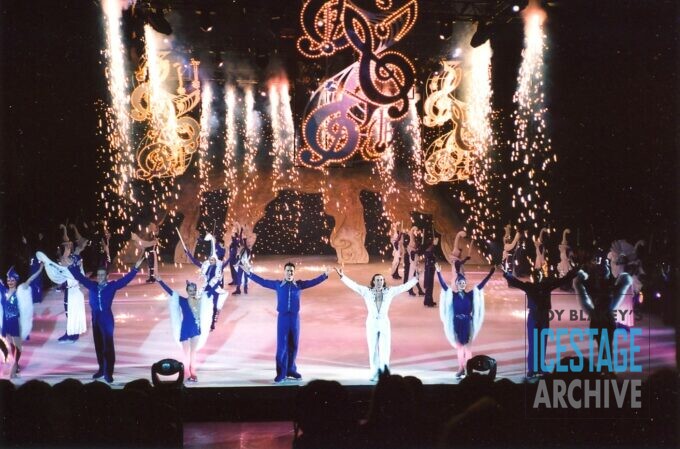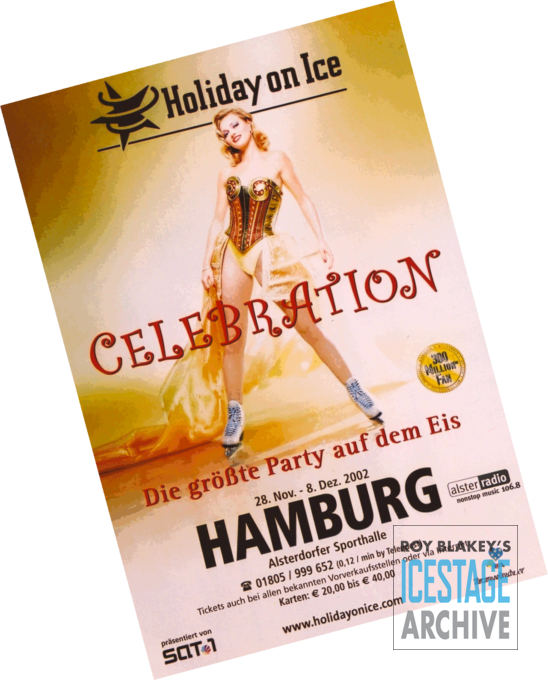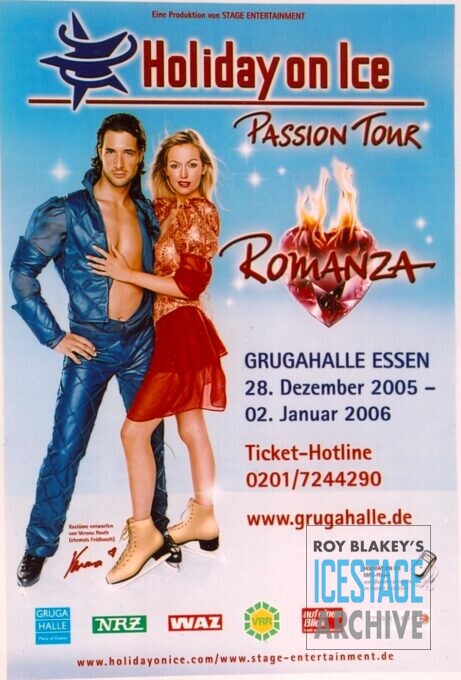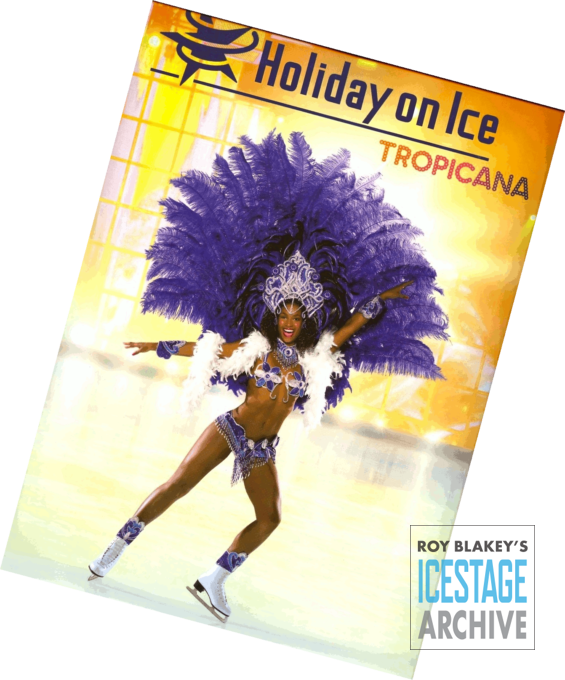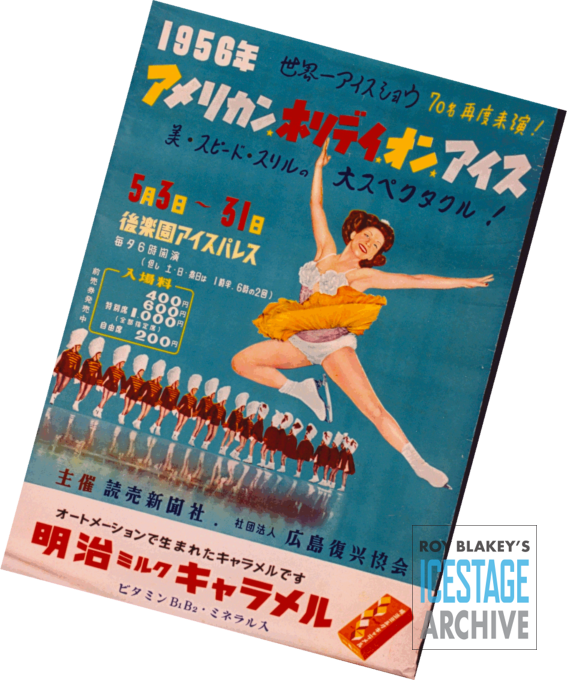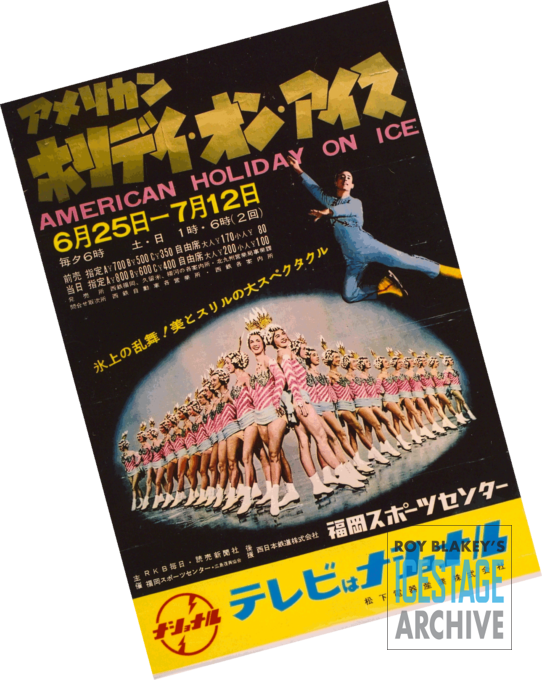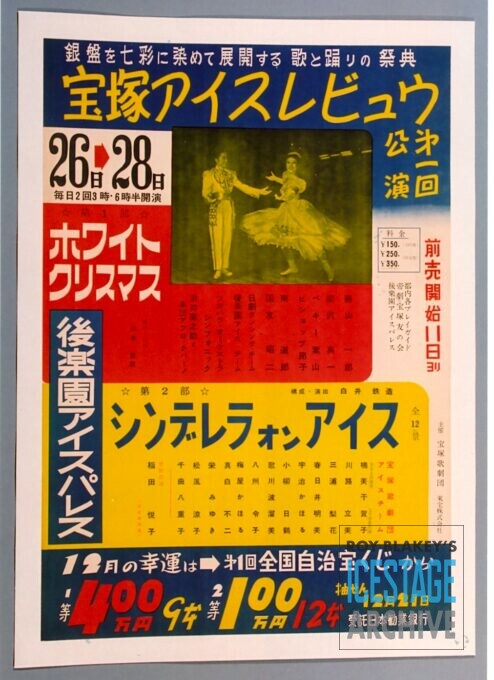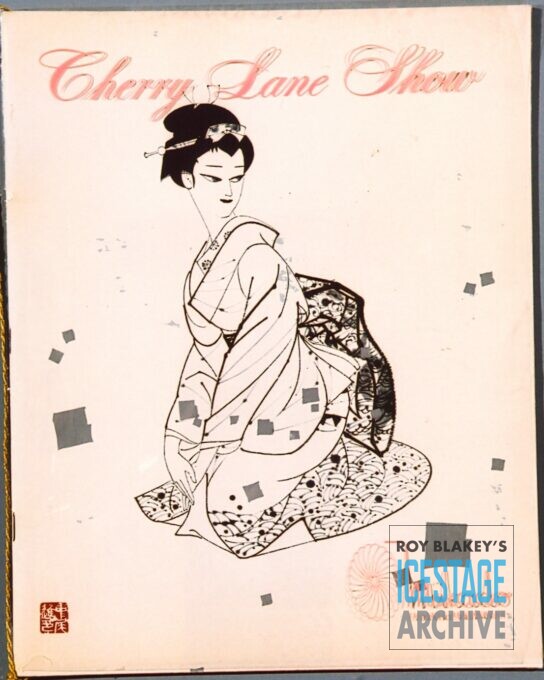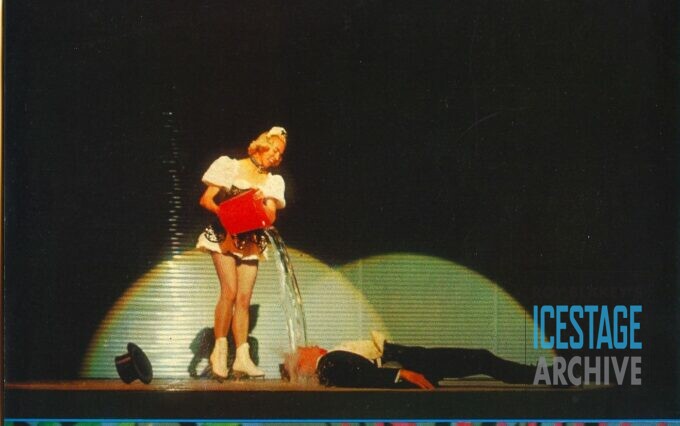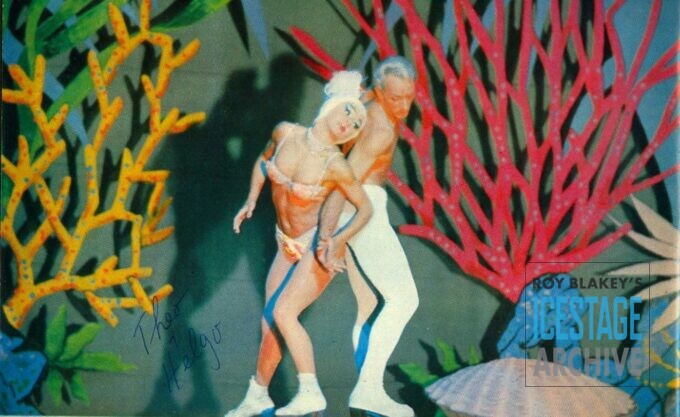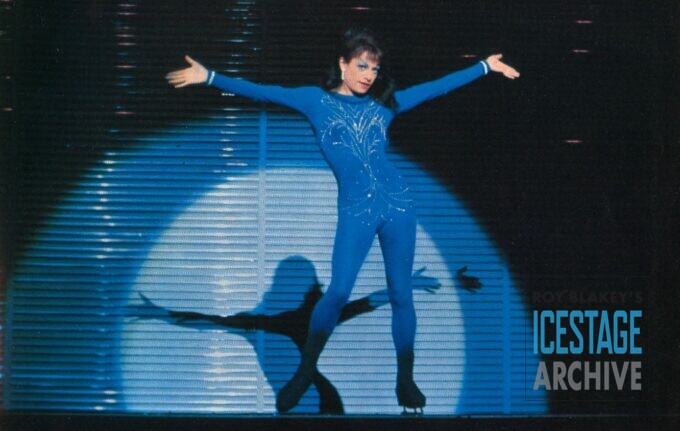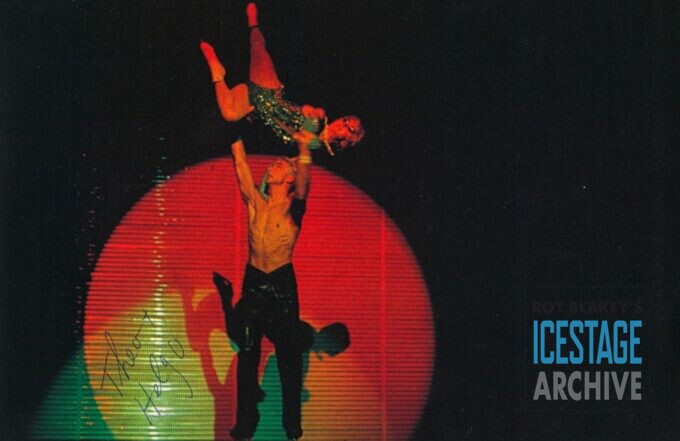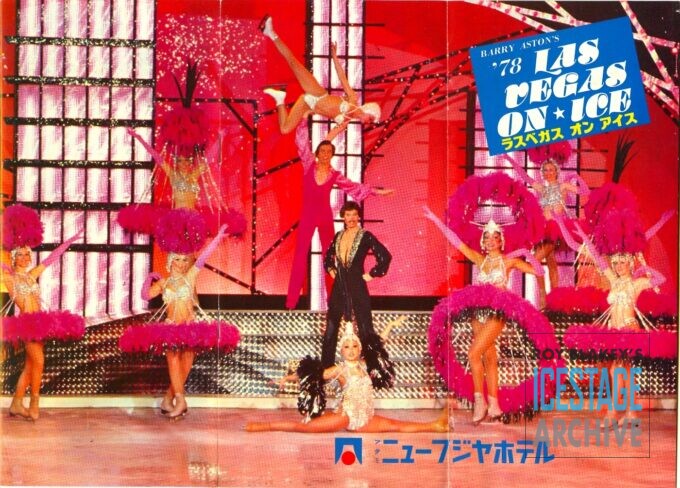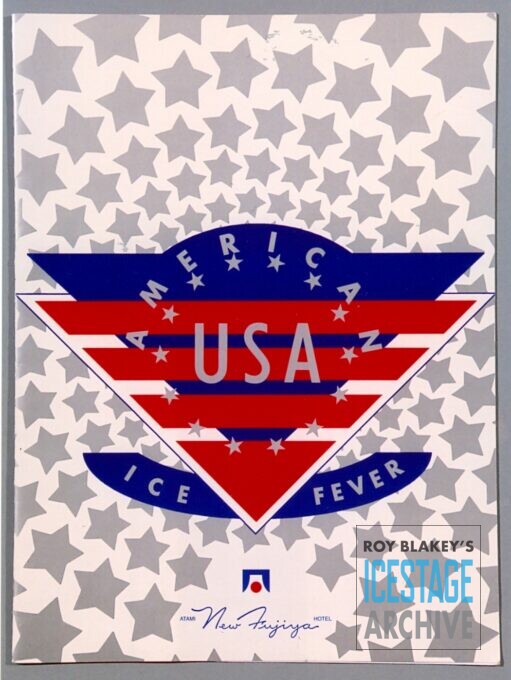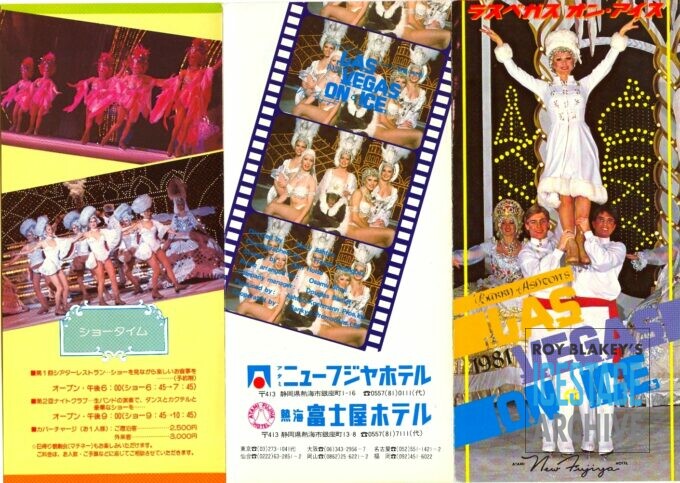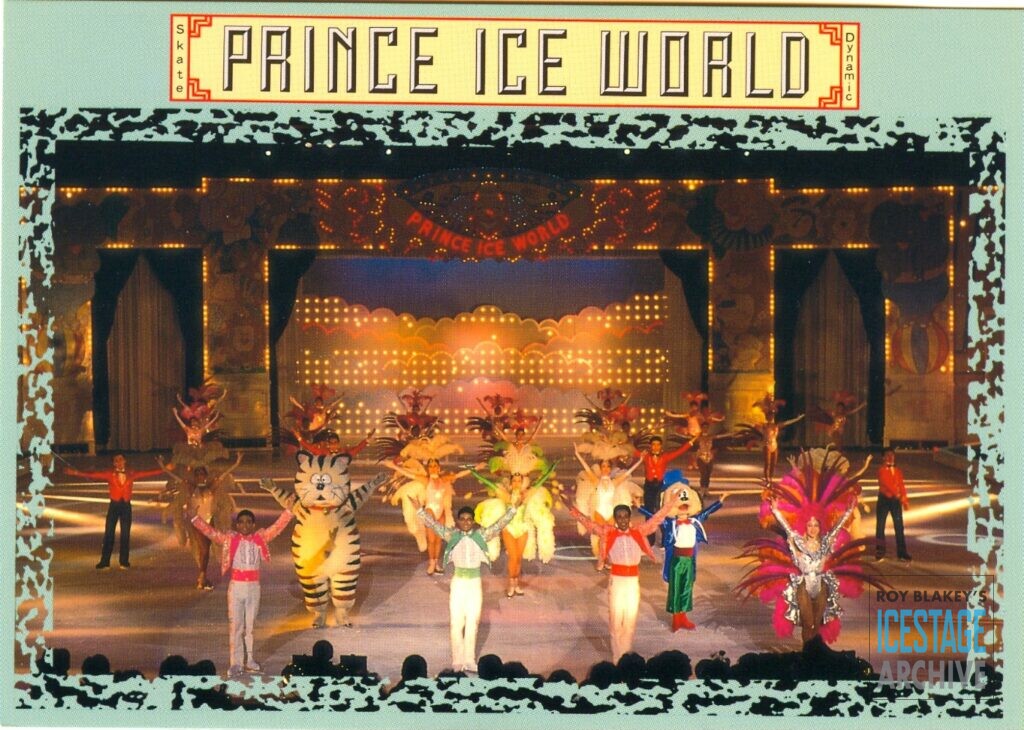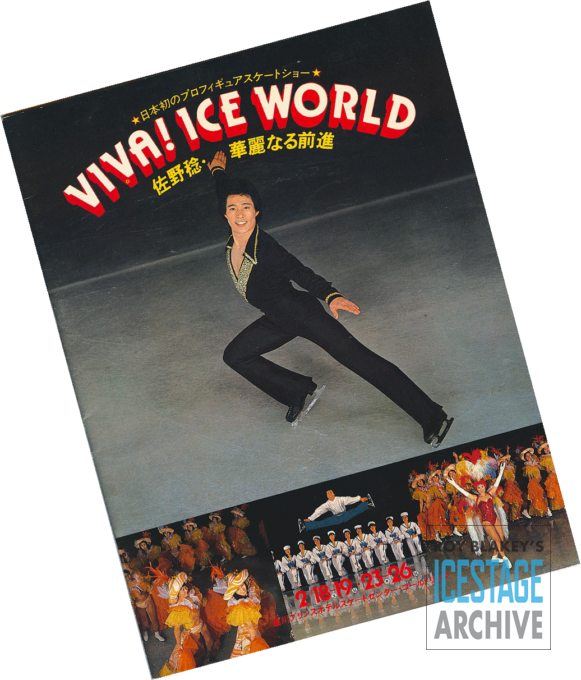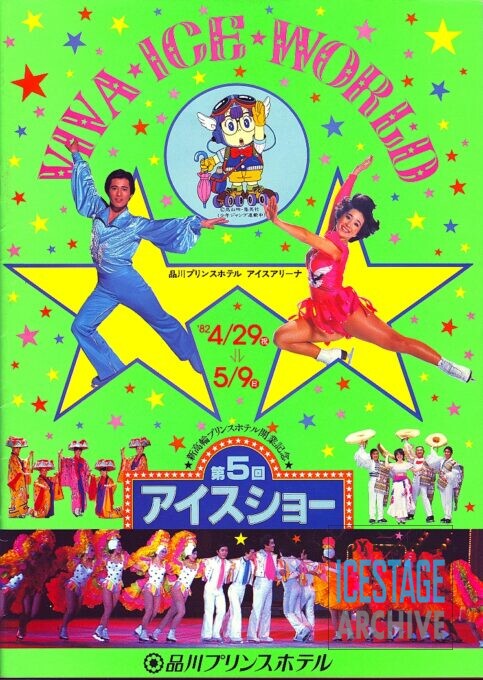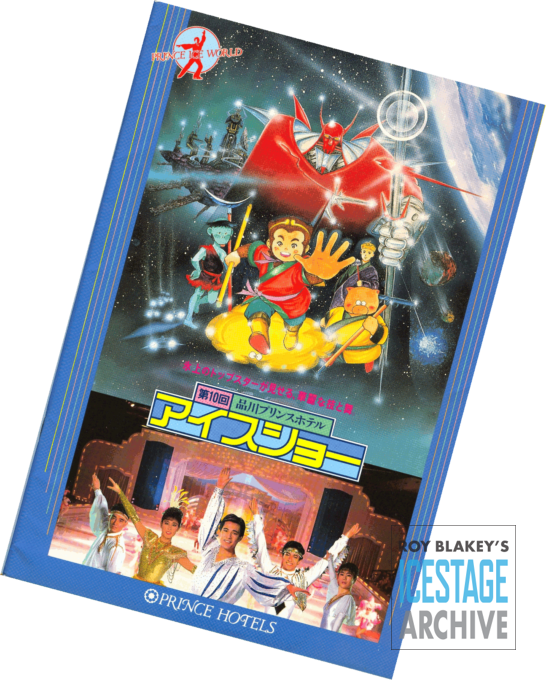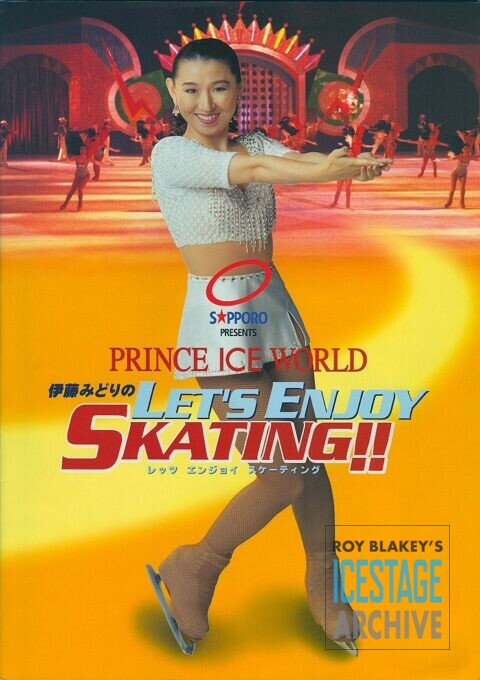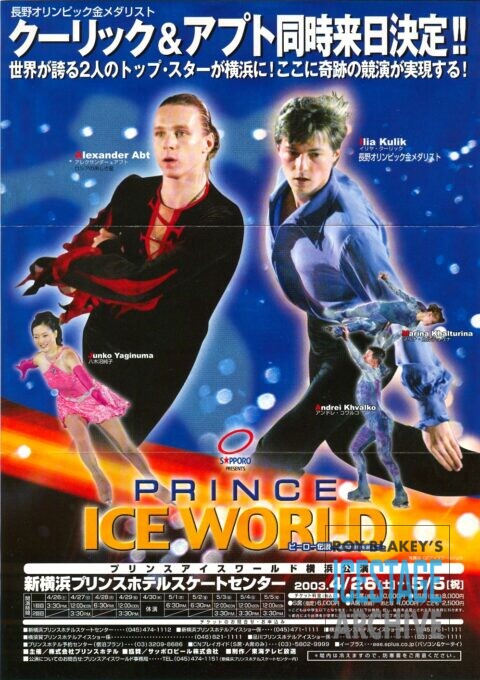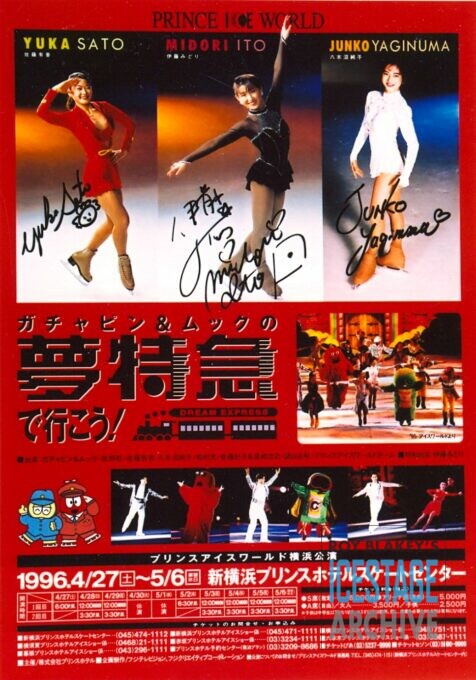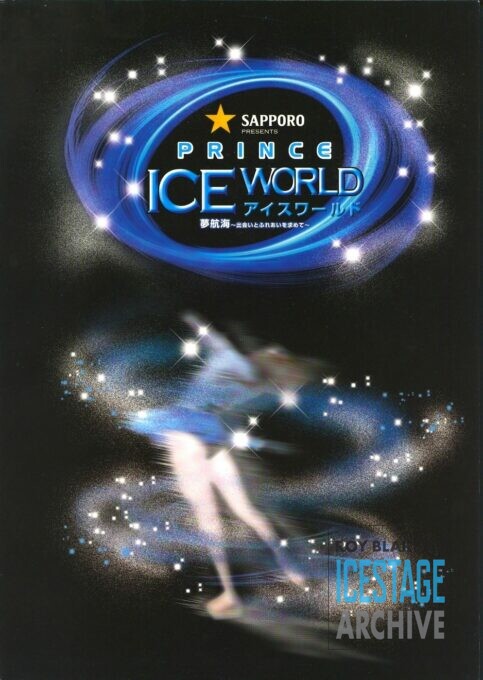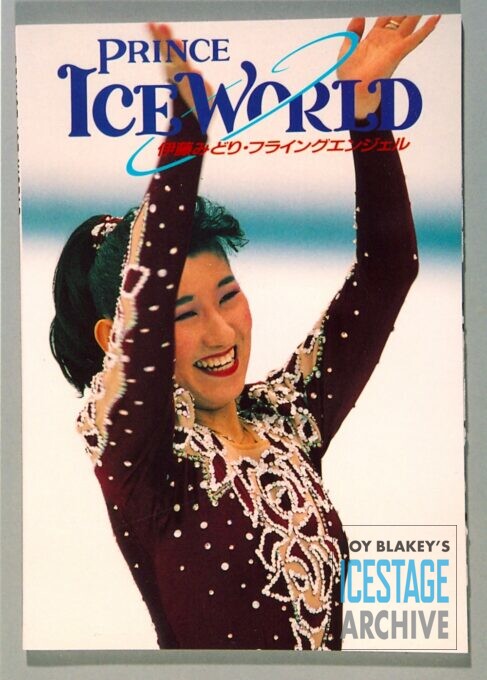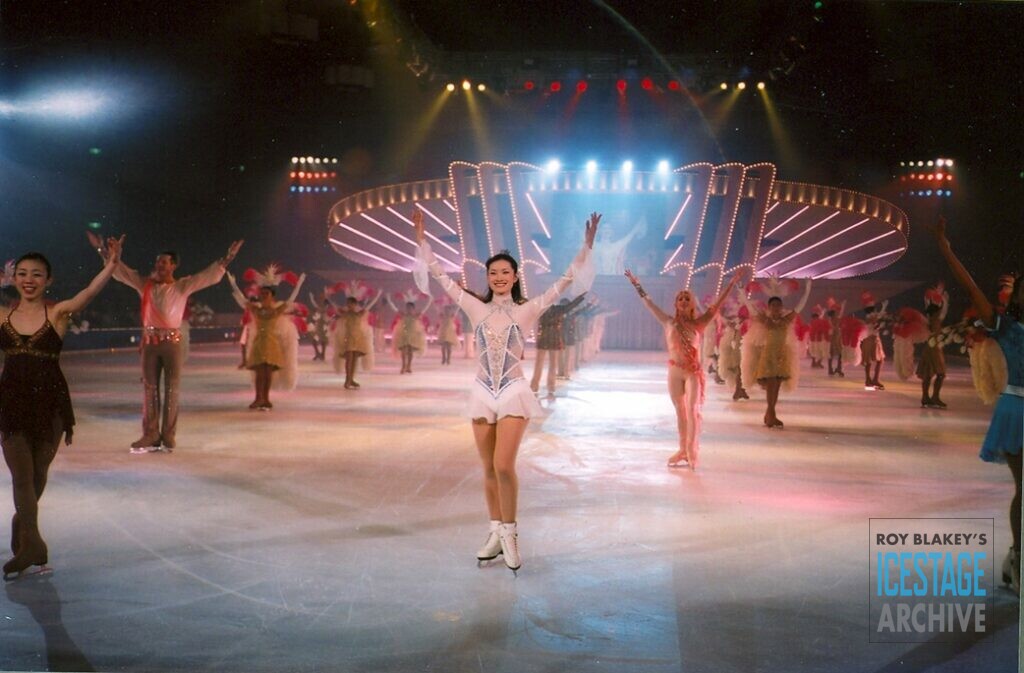The “Holiday On Ice” portable ice rinks passed their rigorous tests of outdoor dates in the heat of Mexico and Cuba in 1947 and ’48. Next came South and Central America. The year-long 1951 show tour itinerary involved many border crossings and some gorgeous but formidable geography. It included Bogotá, Medellín, Barranquilla, and Cali, Colombia; Bahia and São Paulo, Brazil; Buenos Aires, Argentina; Montevideo, Uruguay; Valpariso and Santiago, Chile; Panama City, Panama; and Guatemala City, Guatemala. The great Sonja Henie starred in the 1956 South American tour and was its co-producer. After encountering difficulties Henie left in the middle of what proved to be the final tour of her unparalleled career.
A 1955 four-page report from company manager Bill Stine describing his perilous adventures in getting the ice-making equipment from Guayaquil, Ecuador to Quito for opening night is a cliff hanger in more ways than one: washed-out roads, abysmal alternate routes over treacherous mountains with too-tight turns, rickety bridges that cause both trucks carrying the heavy machinery to be stuck in the middle of a river, desperate hitchhiked flights back to Guayaquil for parts, and a local superman who saves the day just in the nick of time. Ah, show business South American style.
After its 1979 U.S. sale to the Feld organization, “Holiday On Ice” came to an end in North America. The South American tours were taken over by European divisions of “Holiday On Ice,” which visited Brazil so frequently that a permanent office was established there. At the end of a tour when the skaters returned to Europe the ice making equipment would lay idle—until a decision was made to put it to work as public skating rinks. Now some “Holiday” troupes include talented Brazilian skaters. In recent years Latin America has seen few “Holiday On Ice” performances but many of the company’s skaters hope that the world can solve its financial problems so that they will once again be flying down to Rio.
In the late 1940s impresario Morris Chalfen sent his “Holiday On Ice” show to Mexico, Cuba, and Latin America and hit the jackpot. Itching for new challenges, he took his U.S. company to Europe for an eight-month tour in 1950. He reported that European arenas were smaller than those at home, and he often had to supply the seating so the occasional availability of a vast soccer stadium was appreciated. Electric current was different from country to country, as were languages and currencies, and transportation costs were higher. But audiences were still recovering from the devastation of World War II and proved eager for the glamour, excitement, skill, and spectacle of his big American ice show. Chalfen could see a future on the continent for his groundbreaking theatrical endeavors.
At least two “Holiday On Ice” troupes have performed in Europe each year since the early 1950s. The early shows featured skaters and productions from the U.S. that were staged and directed by Marie Carr or Chester Hale. Over the years European venues have ranged from sports halls and ice palaces to 2,000 year old Roman coliseums, ancient Greek amphitheatres, and Spanish bullrings.
In 1959 at the height of the Cold War “Holiday On Ice” skaters performed in the Union of Soviet Socialist Republics (USSR) under a cultural exchange program—the very first ice show from the West to penetrate the Iron Curtain. Every performance was packed and Soviet Premier Khrushchev personally threw a party and welcomed the company with bear hugs and vodka. New productions began to be created in Europe by teams headed by American Ted Shuffle and Stephanie Andros of England. European royals who have joined the 320 million worldwide visitors to “Holiday” performances include Princess Grace and Prince Rainier of Monaco; King Constantine of Greece; King Carlos and Queen Sophia of Spain; and Diana, Princess of Wales. And in Germany in 1958 the most famous man in the world, Elvis Presley, who was then with the U.S. military.
A “Holiday” troupe was dispatched to Japan in 1953 to a tumultuous welcome (see below). Itineraries in the Far East have included tropical countries where ice skating had never been seen. Skaters were rock stars on ice to awestruck audiences in Thailand, the Philippines, Ceylon, Viet Nam, Singapore, and India. The King and Queen of Thailand, Madame Chiang Kai-shek, and Pandit Nehru were among the world figures who came to applaud the thrilling performances. In Indonesia and Burma the “Holiday” ice dancers performed as goodwill ambassadors for the United States Information Service in the 1960s.
By the mid 1950s “Holiday On Ice” had six troupes with portable ice rinks performing simultaneously on five continents. The company traveled to the Middle East in 1960 where Jordan’s King Hussein enjoyed meeting the glamorous skating stars at their performances in an ancient Amman amphitheater. African audiences were fascinated at the sight of—and often gave a hesitant touch to—a vast frozen stage of shimmering ice on which beautifully costumed skaters magically “danced on knives.” The company’s apt slogan, “Totin’ Ice Around the World,” reflected the show’s southern beginnings and global reach. When “Holiday” finally performed in Australia in 1968 it had conquered the world.
The various productions were presented worldwide by Madison Square Garden Corporation from 1967 and purchased by Amsterdam-based Endemol Entertainment Group in 1996. (North American rights are owned by the Feld Organization, producers of “Disney On Ice.”) Renamed Stage Entertainment, the Dutch company has been incorporating 21st century technology and Cirque du Soleil influences into the long- established, signature “Holiday On Ice” spectacular revue format. Since 1999, longtime “Holiday” star Robin Cousins has lead top creative teams in staging a lavish new production each year with themes such as “Celebration,” “Romanza,” and “Tropicana,” emphasizing strong skating technique for today’s very savvy audiences. Cities around the world have built glorious new sports and entertainment complexes with state-of-the-art technology that have eliminated outdoor dates for the three “Holiday” troupes which complete a three-year itinerary, primarily in Europe.
Japan: A Yen For Skating
“Holiday On Ice” has created millions of new fans for figure skating all over the world. That was certainly the case when the company first visited Japan in 1953. The Japanese have always loved theatre, from the time-honored classics of Kabuki and Noh to the fabulous Takarazuka all-girl stage revues, Broadway musicals, and super-spectacular musical productions on television. And they embraced the ice show.
The IceStage Archive collection contains a rare 1954 poster for an unusual two-part Japanese show “White Christmas” which was danced on stage, and “Cinderella” skated by a Takarazuka group on ice. It’s quite probable that seeing “Holiday” a year before inspired the creation of that icy Fairytale. In 1964, with a bow to the famed Lido de Paris cabaret, Tokyo got its own world-class nightclub, The Mikado. And like its French predecessor ice skaters were featured among the stunning theatrical scenes of ancient Japan, a Swan Lake ballet, beautiful nude ladies, a magician with disappearing doves, swirling dancers, comedians, and singers.
That same year patrons of Tokyo’s Golden Akasaka night club enjoyed George Arnold’s “Las Vegas On Ice,” an import from the U.S. In 1978 the New Fujiya Hotel in the Japanese resort city of Atami also brought a U.S. ice production to their show room—a Barry Ashton show also titled “Las Vegas On Ice.” Bietak Productions’ “American Ice Fever” opened its one-year run at the New Fujiya on July 4th, 1990.
I like to think that some young Japanese saw “Holiday On Ice” on one of its visits to their country and found it so unforgettable that they decided Japan must have its own ice show. Whatever the inspiration, in 1978 that idea became reality at the ice rink of Tokyo’s Prince Hotel. The earliest shows, titled “Viva! Ice World,” developed into an eagerly-awaited annual event. Stars of the first five seasons were popular Japanese champions Miwa Fukuhara, Nobu Sato (father of Yuka and now top international coach), and Minoru Sano. Performances ran for about nine days each year presenting Japanese and western production numbers by casts of about forty skaters, with impressive sets and spectacular costumes. By 1991, with Minoru Sano still the handsome athletic leading man, the show’s snappy title was “Pop Step Dance.” Production elements were becoming more impressive, and the company began to make appearances in a few other Japanese cities.
1992 Olympic Silver medalist Midori Ito was Prince Ice World’s enormously popular superstar throughout the 1990s in ever more elaborate and sophisticated presentations and with superbly created souvenir programs. Yuka Sato and Junko Yaginuma co-starred with Midori in shows with a Hello Kitty theme or titles such as “Let’s Enjoy Skating.” Ardent fans bearing flowers and gifts flocked to see favorites Junko Yaginuma, Takeshi Honda, Fumie Suguri, Miki Ando, Mai Asada, and Daisuke Takahashi. Guest stars through the years have included Ilia Kulik, Jozef Sabovcik, Elena Leanova & Andrei Khvalko, Evgeni Pluschenko, and Alexei Yagudin.
In 2006 skater Shizuka Arakawa won the Olympic gold medal for Japan and ascended the throne to reign as the undisputed queen of subsequent Prince Ice World ice shows.
Korea, China, Hong Kong, Taiwan, Malaysia & Singapore
Sadly there is very little Asian theatrical skating history in The IceStage Archive other than from Japan. There are “Holiday On Ice” programs and posters from tours of that region, a program or two from American or European ice shows at the Walker Hill Resort in Korea, a program from a show in Taiwan starring U.S. “Ice Follies” skaters, and an “Ice Capades” program from their short tour in China.
I’ve occasionally seen a mention of local Hong Kong performances with guest star Richard Dwyer, and also of Russian Ice Ballet companies performing in Korea. I’ve read that having Japanese and Korean Olympic Gold medalists in ladies figure skating has prompted many shows and exhibitions in their home countries. I would greatly appreciate hearing from you if you can provide information about recent Asian performances, and of course I would eagerly welcome actual material such as advertisements, souvenir programs, and posters.
